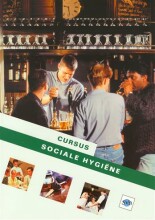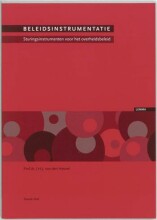Probeer onze studie magie gratis!
Samenvatting: Health Psychology: Biopsychosocial Interactions, 8Th Edition | 9781118802823 | Edward P Sarafino, et al
- Deze + 400k samenvattingen
- Een unieke studie- en oefentool
- Nooit meer iets twee keer studeren
- Haal de cijfers waar je op hoopt
- 100% zeker alles onthouden
Onthoud sneller, leer beter. Wetenschappelijk bewezen.
een PDF bestand en leer hem super snel
- Geen aanmelding, e-mail of creditcard nodig!
- AI maakt onbeperkte flashcards
- AI maakt oefen toetsen van de stof
- Stel vragen aan AI
Maak een notitieblok aan
- Geen aanmelding, e-mail of creditcard nodig!
- Heb en houd perfect overzicht
- Maak Maak flashcards, notities en mindmaps
- Oefen, test jezelf en scoor beter!
Lees hier de samenvatting en de meest belangrijke oefenvragen van Health Psychology: Biopsychosocial Interactions, 8th Edition | 9781118802823 | Edward P. Sarafino; Timothy W. Smith
-
1 An overview of psychology and health
Dit is een preview. Er zijn 14 andere flashcards beschikbaar voor hoofdstuk 1
Laat hier meer flashcards zien -
Gezondheid is een samenspel van welke twee zaken?
Een gezond lichaam en mentaal lekker in je vel zitten -
Wat zijn de 2 toepassingsgebieden van de Gezondheidspsychologie?
Gezondheidsbevordering - gezondheidsgedrag bevorderen om ziekte te voorkomen.
Gezondheidspsychologie - patiënten helpen zo optimaal mogelijk met hun ziekte om te gaan. -
Wat bestudeert gezondheidspsychologie?
Gezondheidspsychologie bestudeert de relatie tussen gedrag, gezondheid en ziekte. Het gaat hierbij om het bevorderen van gezond gedrag en, voor mensen die ziek zijn, het (leren) omgaan met ziekte en bijbehorende beperkingen. Gezondheidspsychologie richt zich zowel op gezonde mensen als op patiënten en hun omgeving. -
In een ander bekend handboek over gezondheidspsychologie geeft Taylor (2003) een andere definitie van gezondheidspsychologie. Welke is dat?
Gezondheidspsychologie is het onderdeel van de psychologie dat is gericht op het verkrijgen van inzicht in de psychologische factoren die een rol spelen bij hoe en waarom mensen gezond blijven of ziek worden, en hoe zij omgaan met die ziekte. Gezondheidspsychologie speelt een rol in gezondheidsbevordering en bewaking, preventie en behandeling van ziekte, de rol van psychologische factoren in etiologie van ziekte en gezondheid, de verbetering van de gezondheidszorg en het ontwikkelen van een gezondheidsbeleid. -
Wat zijn de fasen van het ziekteproces?
- Symptoomperceptie
- Hulpvraag en diagnose (wat bepaalt hoe snel iemand naar de huisarts stapt met hoofdpijn klachten?)
- Behandeling bij acute en chronische ziekten (hoe zorg je ervoor dat patiënten de adviezen van hun zorgverlener opvolgen? Hoe geef je kankerpatiënten de beste nazorg?)
- Palliatieve fase
-
1.1 What is health
Dit is een preview. Er zijn 27 andere flashcards beschikbaar voor hoofdstuk 1.1
Laat hier meer flashcards zien -
Welke definitie geeft het boek aan gezondheid?
Een toestand van lichamelijk, geestelijk en sociaal welbevinden - niet alleen het afwezig zijn van ziekte of andere lichamelijke gebreken - dat in de tijd varieert langs een continuüm (met aan de ene kant gezondheid en aan de andere kant ziekte of blessure) (WHO, 1948).
De gegeven definitie is eigenlijk een definitie van optimale gezondheid. Hieruit blijkt al dat gezondheid een variabele is, een eigenschap die kan variëren. Iemand kan meer of minder gezond zijn, mensen zijn in bepaalde mate ziek of gezond. Sarafino spreekt dan ook over illness-wellnesscontinuüm. -
Waarom zijn gezondheid en ziekte niet compleet te scheiden maar zit er een overlap in?
Dat heeft te maken met het feit dat als mensen nog geen signalen hebben van bijv. een ziekte het niet zo is dat ze een gezond leefstijl hebben. Bijv. mensen die roken - ze voelen zich gezond, maar zijn ze het ook daadwerkelijk? -
Definitie Gezondheid volgens boek
Een positieve staat van fysieke, Mentale en sociaal welzijn dat varieert in de tijd langs een continuüm. Deze definitie is breder dan enkel de afwezigheid van ziekte of letsel. -
Welke theory stelde Hippocrates?
Hippocrates (Father of Medicine) stelde een humoral theory of illness. Volgens deze theorie bevat het bloed 4 vloeistoffen genoemd humors. Wanneer de mix tussen deze humors in balans is, is de persoon in staat van gezondheid. Ziekten verschijnen wanneer deze vloeistoffen dus niet in balans zijn. -
Welke theorie stelde Plato?
Plato was een van de eerste die voorstelde dat de geest en het lichaam gescheiden gehelen zijn. De geest is het abstracte proces van gedachten, percepties en gevoelens en het lichaam is het fysieke deel zoals organen, spieren en botten. Deze relatie werd het mind/body problem genoemd.
Lees volledige samenvatting
Deze samenvatting +380.000 andere samenvattingen Een unieke studietool Een oefentool voor deze samenvatting Studiecoaching met filmpjes
- Hogere cijfers + sneller leren
- Niets twee keer studeren
- 100% zeker alles onthouden
Onderwerpen gerelateerd aan Samenvatting: Health Psychology: Biopsychosocial Interactions, 8Th Edition
-
An overview of psychology and health - What is health
-
An overview of psychology and health - Viewpoints from history: physiology, disease processes and the mind
-
An overview of psychology and health - Seeing a need: psychology's role in health
-
An overview of psychology and health - Current perspectives on health an illness
-
An overview of psychology and health - Related scientific field
-
The Body's Physical Systems - Het zenuwstelsel - How the nervous system works
-
Het zenuwstelsel - The central nervous system - The Forebrain = Voorhersenen
-
Het zenuwstelsel - The central nervous system - The Brainstem = de hersenstam
-
Het zenuwstelsel - The central nervous system - The Spinal Cord
-
The Body's Physical Systems - Het zenuwstelsel - The Peripheral nervous system
-
The Body's Physical Systems - The Endocrine system
-
The Body's Physical Systems - Het spijsverteringssysteem - Food's journey through digestive organs
-
The Body's Physical Systems - Het spijsverteringssysteem - using nutrients in metabolism
-
The Body's Physical Systems - The Respiratory System
-
The Body's Physical Systems - Het hart-en vaatstelsel - the heart and blood vessels
-
The Body's Physical Systems - Het imuunsysteem - soldiers of the immune system
-
The Body's Physical Systems - De Interventiecyclus
-
Stress - it's meaning, impact and sources - Experiencing stress in our lives
-
Stress - it's meaning, impact and sources - Biopsychosocial aspects of stress
-
Stress - it's meaning, impact and sources - Sources of stress throughout life
-
Stress - it's meaning, impact and sources - Measuring stress
-
Stress - it's meaning, impact and sources - Can stress be good for you
-
Stress, biopsychosocial factors and illness - Psychosocial modifiers of stress - Social support
-
Stress, biopsychosocial factors and illness - Psychosocial modifiers of stress - A sense of a personal control
-
Stress, biopsychosocial factors and illness - Psychosocial modifiers of stress - Personality as resilience and vulnerability
-
Stress, biopsychosocial factors and illness - Psychosocial modifiers of stress - Type A behavior and beyond
-
Stress, biopsychosocial factors and illness - How stress affects health
-
Stress, biopsychosocial factors and illness - Psychophysiological disorders
-
Stress, biopsychosocial factors and illness - Stress and cardiovascular disorders
-
Omgaan met en verminderen van stress - Coping with stress - Functions an methods of coping
-
Omgaan met en verminderen van stress - Reducing the potential for stress
-
Omgaan met en verminderen van stress - Reducing stress reactions: stress management
-
Gezondheidsgerelateerd gedrag en gezondheidsbevordering - Health and behavior
-
Gezondheidsgerelateerd gedrag en gezondheidsbevordering - What determines people's health-related behavior?
-
Gezondheidsgerelateerd gedrag en gezondheidsbevordering - Developmental, general and sociocultural factors in health
-
Gezondheidsgerelateerd gedrag en gezondheidsbevordering - Programs for health promotion
-
Gezondheidsgerelateerd gedrag en gezondheidsbevordering - Artikel Lechner 2012: Determinanten van gedrag
-
Middelengebruik en misbruik - De omvang en ernst van de problematiek rond roken, alcoholgebruik en drugsgebruik beschrijven en toelichten - Addiction and Dependence
-
Middelengebruik en misbruik - De determinanten van gebruik van tabak, alcohol en drugs beschrijven en toelichten - Why people smoke
-
Middelengebruik en misbruik - De determinanten van gebruik van tabak, alcohol en drugs beschrijven en toelichten - Smoking and health
-
Middelengebruik en misbruik - Alcohol use en abuse - Who drinks and how much
-
Middelengebruik en misbruik - Alcohol use en abuse - Drinking and health
-
Middelengebruik en misbruik - De strategieën die worden gebruikt in preventie en terugdringen van gebruik van tabak, alcohol en drugs beschrijven en toelichten - Drug use and health
-
Middelengebruik en misbruik - Reducing substance use and abuse - Preventing substance use
-
Middelengebruik en misbruik - Reducing substance use and abuse - Quitting a substance without therapy
-
Middelengebruik en misbruik - Reducing substance use and abuse - Treatment methods to stop substance use and abuse
-
Middelengebruik en misbruik - Reducing substance use and abuse - Dealing with the relaps problem
-
Nutrition weight control and diet exercise and safety - Nutrition
-
Nutrition weight control and diet exercise and safety - Weight control and diet
-
Nutrition weight control and diet exercise and safety - Exercise
-
Nutrition weight control and diet exercise and safety - Safety
-
Het gebruik van gezondheidszorg - Perceiving and interpreting symptoms
-
Het gebruik van gezondheidszorg - Uitleggen welke factoren van invloed zijn op de relatie tussen patiënt en arts - Who uses health services
-
Het gebruik van gezondheidszorg - Uitleggen welke factoren van invloed zijn op de relatie tussen patiënt en arts - Why people use, don't use and delay using health services
-
Het gebruik van gezondheidszorg - Uitleggen welke factoren van invloed zijn op de relatie tussen patiënt en arts - Using complementary and alternative medicine
-
Het gebruik van gezondheidszorg - Uitleggen welke factoren van invloed zijn op de relatie tussen patiënt en arts - Problematic health service usage
-
Het gebruik van gezondheidszorg - The patient - practioner relationship
-
Het gebruik van gezondheidszorg - Compliance: adhering to medical advice
-
In het ziekenhuis - The hospital - its history, setting and procedures
-
In het ziekenhuis - Being hospitalized
-
In het ziekenhuis - Emotional adjustment in the hospital
-
In het ziekenhuis - De belangrijkste wetten rondom het primaire proces van zorg in Nederland benoemen en toelichten - Tests for psychological assessment of medical patients
-
In het ziekenhuis - When the ilness in terminal
-
De aard en symptomen van pijn - Beschrijven wat pijn is, wat de gevolgen van pijn zijn, welke verschillende soorten pijn onderscheiden worden, hoe pijn ervaren wordt - Pereiving pain
-
De aard en symptomen van pijn - Beschrijven wat de belangrijkste pijntheorieën inhouden - Early theories of pain
-
De aard en symptomen van pijn - Beschrijven wat de belangrijkste pijntheorieën inhouden - The gate-control theory of pain
-
De aard en symptomen van pijn - Biopsychosocial aspects of pain
-
De aard en symptomen van pijn - Assessing people's pain - Self-report methods
-
De aard en symptomen van pijn - Assessing people's pain - Behavioral assessment approaches
-
De aard en symptomen van pijn - Assessing people's pain - Psychophysiological measures
-
Managing and controlling clinical pain - Beschrijven wat onder klinische pijn wordt verstaan en waarom klinische pijn behandeling behoeft - Acute clinical pain
-
Managing and controlling clinical pain - Medical treatments for pain
-
Managing and controlling clinical pain - Behavioral and cognitive methods for treating pain
-
Managing and controlling clinical pain - Hypnosis and interpersonal therapy
-
Managing and controlling clinical pain - Physical and stimulation therapies for pain - Stimulation therapies
-
Managing and controlling clinical pain - Pain clinics
-
Serious and disabling chronic illnesses
-
Heart disease stroke, cancer and aids: causes, management and coping






























